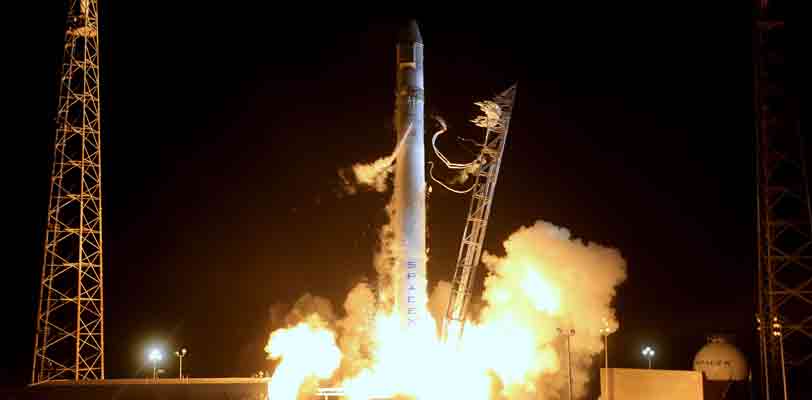CAPE CANAVERAL, Fla. — The SpaceX Falcon 9 rocket thundered into space delivering a cargo capsule into orbit on Tuesday.
The historic launch began an ambitious mission to show that SpaceX can deliver cargo to the International Space Station.
Working with an instantaneous launch window, SpaceX, short for Space Exploration Technologies of Hawthorne, Calif.,
The rocket had a flawless countdown. Liftoff from Space Launch Complex-40 at Cape Canaveral Air Force Station in Florida came at 3:44 a.m. EDT, just as the station was crossing 249 miles above the North Atlantic.
The launch originally was set for last Saturday but was scrubbed literally during the last second due to a stuck engine valve, and rescheduled for Tuesday.
Both NASA and SpaceX decided to hold to the original May 31 end-of-mission date. If all goes well, Dragon will splashdown in the Pacific Ocean that day, and SpaceX will retrieve it.
The prospect of SpaceX carrying astronauts is at least three years away.
SpaceX is planning two more cargo launches this year and up to 17 in the next three or four years, serving both NASA and other customers, including private satellite companies and agencies in Canada, Thailand and Argentina. Almost all of those launches are planned from Cape Canaveral, though some will leave Vandenberg Air Force Base in California.
"We're now back on the brink of a new future, a future that embraces the innovation the private sector brings to the table," said NASA Administrator Charles Bolden. "The significance of this day cannot be overstated. While there is a lot of work ahead to successfully complete this mission, we are off to a good start."
"Every bit of adrenaline in my body released at that moment," said Elon Musk about the moment the rocket lifted off the pad. Musk is the founder, CEO and chief designer of SpaceX. "People were really giving it their all. For us, it was like winning the Super Bowl."
Dragon carries about 1,200 pounds of supplies for the crew of the station and experiments designed by students. The spacecraft can hold 7,300 pounds of material for delivery to the station, but since this is a test flight, the manifest was limited to important but not critical materials. Food and clothing make up the bulk of the supplies.
Until now, only NASA and the Japanese, European and Russian space agencies have docked with the space station. Since NASA retired its space shuttle fleet last summer, only the Russians are able to deliver astronauts. NASA said it has no more contracts for the Russians to truck cargo to the space station, and is turning over everything possible to the commercial companies.
The Dragon will remain connected to the station for about three weeks, allowing astronauts to empty it before loading it with used scientific equipment for the return to Earth.
Reversing the process of connecting the spacecraft to the station, astronauts will use the robotic arm to remove the Dragon capsule. The Dragon will then de-orbit and return to Earth under parachutes, splashing down in the Pacific Ocean off the California coast.
